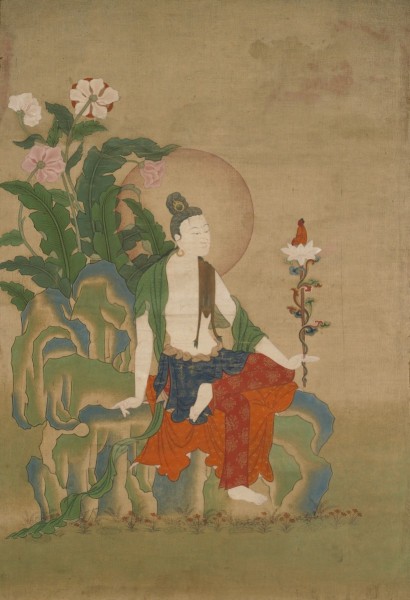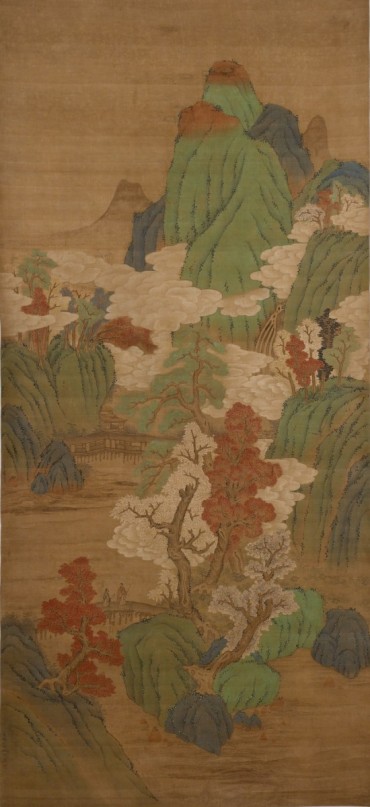Eastern Tibet, 18th century; pigment on cloth with silk mount; 39 3/8 x 20 3/4 x 1/2 in.; The Rubin Museum of Art, New York, C2008.9.
Autumn Landscape in Blue–and–Green Style
China, style of Chang Sem-yu, 17th century; ink and color on silk mounted on paper; 88 1/8 x 40 7/8 in.; The Walters Art Museum, Baltimore, 35.3.
This Chinese landscape painting represents the kind of stylistic tradition that revolutionized Tibetan art beginning in the 15th century. Instead of Indic reds and oranges, a blue and green palette began to predominate. In later Tibetan works, such as the example on the left, painters rendered Avalokiteshvara more naturalistically and placed him within an idealized yet believable setting. These features readily draw the viewer into the bodhisattva’s world.





